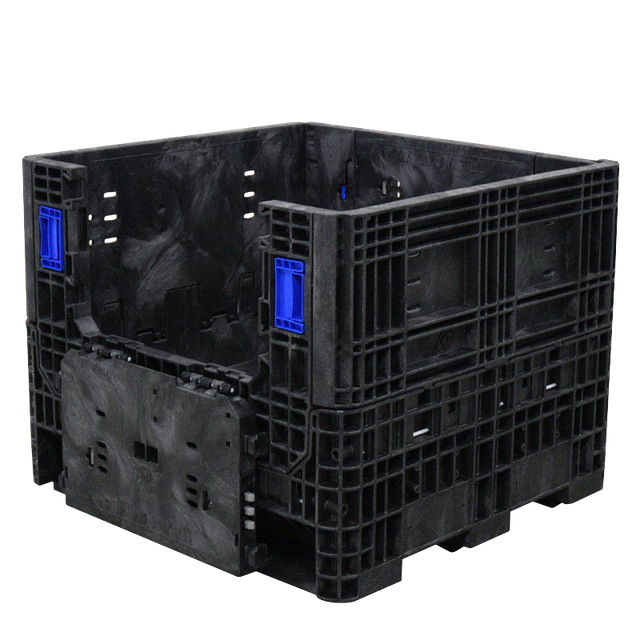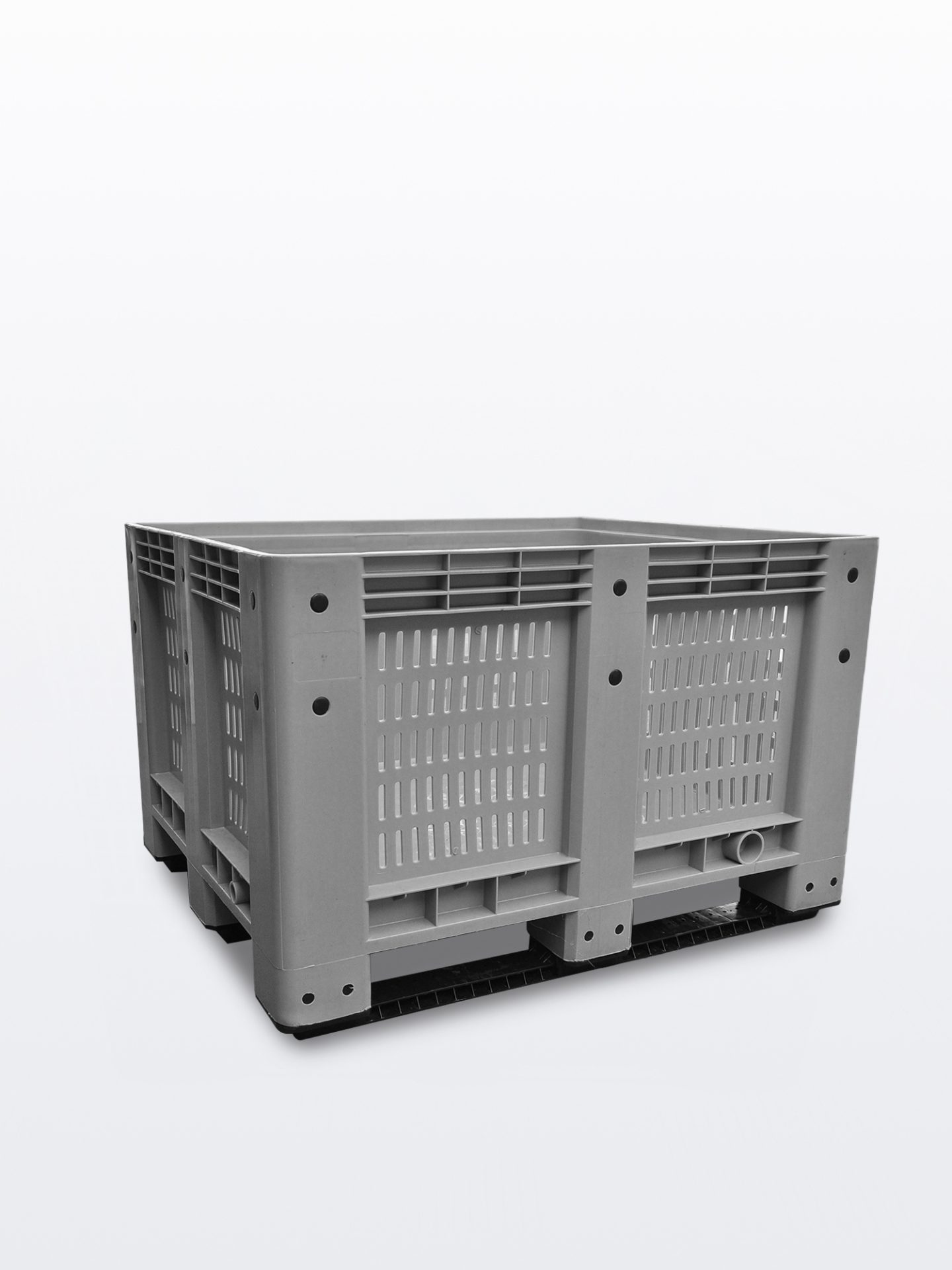Everything About Mass Plastic Containers: Advantages, Applications, and Sector Insights
Mass plastic containers play a considerable duty in numerous sectors, using advantages that improve effectiveness and sustainability. Their light-weight nature reduces shipping expenses, while their durability warranties secure storage space and transportation of varied products. As business progressively seek green remedies, the demand for these containers is growing. This elevates crucial concerns about the products used and the fads influencing their style. What ramifications do these elements have for the future of bulk plastic containers?
Benefits of Mass Plastic Containers
Mass plastic containers supply a wide variety of benefits in various industries. Their lightweight layout notably lowers transport costs, allowing for efficient logistics and less complicated handling. In addition, these containers offer sturdiness and resistance to weather elements, chemicals, and physical effect, making certain the risk-free storage and transportation of products. The adaptability of mass plastic containers allows them to be built into numerous shapes and dimensions, dealing with details market demands.

Usual Applications Across Industries
While various industries utilize bulk plastic containers, their applications are especially famous in markets such as food and drink, drugs, agriculture, and production. In the food and beverage market, these containers are crucial for storing and delivering items like grains, liquids, and ready dishes, making certain quality and security. The pharmaceutical industry depends on bulk plastic containers for protected storage of vaccinations and medicines, preserving compliance with stringent guidelines.
In farming, these containers assist in reliable handling and transportation of fruit and vegetables, plant foods, and chemicals, while additionally sustaining sustainable techniques via recyclability. Manufacturing sectors use bulk plastic containers for parts storage space and production line procedures, advertising organization and workflow efficiency. Additionally, these containers offer a significant duty in logistics and supply chain monitoring, streamlining the motion of items across various fields. Generally, the convenience of mass plastic containers makes them indispensable throughout multiple markets.
Product and Layout Factors To Consider
When selecting mass plastic containers, material and design factors to consider play an essential role in making certain functionality and conformity with market requirements. The option of product significantly impacts the container's resilience, weight capacity, and resistance to environmental variables. Common materials include high-density polyethylene (HDPE) and polypropylene, recognized for their strength and chemical resistance.
Style elements, such as closure, dimension, and form systems, likewise influence functionality. Containers with ergonomic handles and stackable styles boost storage space performance and ease of transport. Furthermore, features like venting or drain openings might be required for certain applications, permitting for air circulation or liquid elimination.
Compliance with safety laws, such as FDA authorizations for food-grade applications, is vital. plastic bulk containers. Overall, cautious consideration of products and style can optimize efficiency and longevity, guaranteeing that bulk plastic containers satisfy the varied requirements of various markets efficiently
Patterns in Mass Plastic Container Usage
As markets progress, the use of bulk plastic containers is progressively affected by sustainability and effectiveness. Business are selecting environmentally friendly materials, such as recycled plastics, to minimize environmental impact while preserving resilience. This change is driven by customer need for lasting methods and regulatory stress focused on minimizing plastic waste.
Furthermore, the pattern toward automation in logistics and supply chain monitoring is improving container layouts. Bulk containers are currently being crafted for compatibility with automated systems, boosting functional performance. Lightweight styles are also getting grip, as they minimize delivery costs and energy usage during transport.
On top of that, customization is ending up being a prime focus, allowing businesses article source to customize containers to specific requirements, consequently maximizing room and performance. These trends mirror a more comprehensive dedication to sustainability, innovation, and effectiveness within numerous sectors, guaranteeing that mass plastic containers continue to play a crucial function in modern-day supply chains.
Ideal Practices for Storage and Transportation
Effective storage and transport of bulk plastic containers need adherence to finest methods that improve safety and performance. Containers should be stacked securely, ensuring that weight is evenly distributed to stop tipping or damages. Making use of pallets can promote simpler motion and shield the containers from ground moisture. Furthermore, proper labeling is essential for quick recognition and monitoring during transit.
Temperature control is one more essential factor; extremes can endanger the stability of the materials. It is a good idea to keep containers in a climate-controlled atmosphere when required. For transportation, choosing proper automobiles created for bulk loads warranties security and reduces threat during transit.
Normal examinations of containers before storage and transport assistance determine any wear or damage, enabling prompt maintenance or substitute. By adhering to these ideal techniques, organizations can optimize the lifecycle of mass plastic containers while preserving operational performance.
Often Asked Questions

Are Mass Plastic Containers Recyclable After Usage?
Yes, bulk plastic containers are commonly recyclable after use. Recyclability depends on the product kind and neighborhood recycling programs. Appropriate cleansing and sorting are vital to ensure they are accepted by reusing centers.

What Is the Life-span of Mass Plastic Containers?
The life-span of bulk plastic containers normally varies from five to 10 years, relying on use problems, material quality, and ecological elements. Bulk Plastic Containers. Proper maintenance can extend their resilience, making them a resilient storage space solution
Can Bulk Plastic Containers Be Personalized?
Yes, bulk plastic containers can be customized. Makers frequently provide choices for dimension, product, color, and branding, enabling businesses to tailor containers to their particular demands and improve their item discussion and performance.
Exactly How Do Mass Plastic Containers Compare in Cost to Alternatives?
Bulk plastic containers commonly provide a lower price compared to alternatives like metal or glass, as a result of their lightweight nature and resilience. This makes them a cost-efficient option for services requiring efficient storage space content options.
Exist Safety Laws for Making Use Of Bulk Plastic Containers?

Bulk plastic containers play a significant role in different industries, providing benefits that boost performance and wikipedia reference sustainability. While various sectors utilize bulk plastic containers, their applications are especially popular in markets such as food and drink, drugs, farming, and manufacturing. Manufacturing industries use bulk plastic containers for components storage and setting up line procedures, promoting organization and operations effectiveness. When choosing bulk plastic containers, product and design considerations play a crucial role in ensuring performance and compliance with sector criteria. As industries progress, the usage of mass plastic containers is significantly affected by sustainability and efficiency.